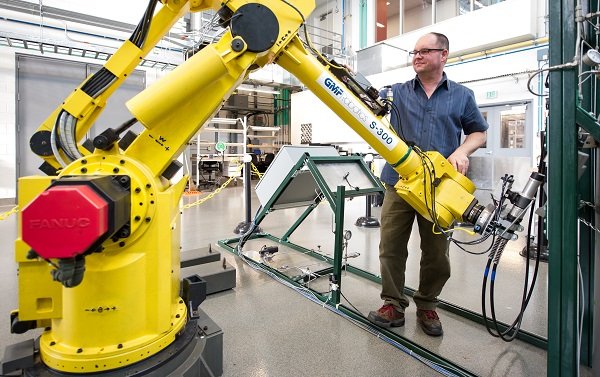Career, Salary and Education Information
Careers Information
We provide hundreds of detailed career profiles with information provided by the U.S. Department of Labor. Whether you’re researching specific professions or just exploring available career options there’s no better place to look.
Our career profiles are broken down into sections:
Nature of the Work / What They Do
This section discusses what workers do. Individual job duties may vary by industry or employer. For instance, workers in larger firms tend to be more specialized whereas those in smaller firms often have a wider variety of duties. Most occupations have several levels of skills and responsibilities through which workers may progress. Beginners may start as trainees performing routine tasks under close supervision. Experienced workers usually undertake more difficult tasks and are expected to perform with less supervision.
The influence of technological advancements on the way work is done is mentioned. For example, the Internet allows purchasers to acquire supplies with a click of the mouse, saving time and money. This section of statements also discusses emerging specialties. For instance, sales engineers—who combine the education of an engineer with the challenge of sales—comprise a specialty within manufacturers’ and wholesale sales representatives.
Working Conditions / Environment
This section identifies the typical hours worked, the workplace environment, susceptibility to injury, special equipment, and physical activities and the extent of travel required. In many occupations people work regular business hours-40 hours a week, Monday through Friday-but many do not. For example, many doctors are required to work evenings and weekends.
The work setting can range from an office, to a hospital, to a mall, to an off-shore oil rig. Some occupations may be susceptible to injury, while other occupations have high job-related stress. Electronic semiconductor processors may wear protective clothing or equipment, some construction craft laborers do physically demanding work, and top executives may travel frequently.
How to Become One
After knowing what a job is all about, it is important to understand how to train for it. This section describes the most significant sources of training, including the training preferred by employers, the typical length of training, and advancement possibilities. Job skills are sometimes acquired through high school, informal on-the-job training, formal training (including apprenticeships), the Armed Forces, home study, hobbies, or previous work experience. For example, sales experience is particularly important for many sales jobs. Many professional and technical jobs, on the other hand, require formal postsecondary education—postsecondary vocational or technical training, or college, postgraduate, or professional education.
In addition to training requirements, this section also mentions desirable skills, aptitudes, and personal characteristics. For some entry-level jobs, personal characteristics are more important than formal training. Employers generally seek people who read, write, and speak well; compute accurately; think logically; learn quickly; get along with others; and demonstrate dependability.
Some occupations require certification or licensing to enter the field, to advance, or to practice independently. Certification or licensing generally involves completing courses and passing examinations. Many occupations increasingly have continuing education or skill improvement requirements to keep up with the changing economy or to improve advancement opportunities.
Earnings / Pay
This section discusses typical earnings and how workers are compensated—annual salaries, hourly wages, commissions, piece rates, tips, or bonuses. Within every occupation, earnings vary by experience, responsibility, performance, tenure, and geographic area. Earnings data from the Bureau of Labor Statistics and, in some cases, from outside sources are included. Data may cover the entire occupation or a specific group within the occupation.
Benefits account for more than a quarter of total compensation costs to employers. Benefits such as paid vacation, health insurance, and sick leave generally are not mentioned because thay are so widespread. Less common benefits include child care, tuition for dependents, housing assistance, summers off, and free or discounted merchandise or services. Though not as common as traditional benefits such as paid vacation, employers increasingly offer flexible hours and profit sharing plans to attract and retain highly qualified workers.
Please note that the earnings and salary data located here is usually from government sources and is often dated, so please make adjustments accordingly.
Job Outlook
In planning for the future, it is important to consider potential job opportunities. This section describes the factors that will result in growth or decline in the number of jobs. In some cases, this section mentions the relative number of job openings an occupation is likely to provide. Occupations which are large and have high turnover rates, such as food and beverage service occupations, generally provide the most job openings—reflecting the need to replace workers who transfer to other occupations or stop working.
Some statements discuss the relationship between the number of jobseekers and job openings. In some occupations, there is a rough balance between jobseekers and openings, whereas other occupations are characterized by shortages or surpluses. Limited training facilities, salary regulations, or undesirable aspects of the work—as in the case of private household workers—can cause shortages of entrants. On the other hand, glamorous or potentially high paying occupations, such as actors or musicians, generally have surpluses of jobseekers. Variation in job opportunities by industry, size of firm, or geographic location also may be discussed. Even in crowded fields, job openings do exist. Good students or well-qualified individuals should not be deterred from undertaking training or seeking entry.
Susceptibility to layoffs due to imports, slowdowns in economic activity, technological advancements, or budget cuts are also addressed in this section. For example, employment of construction craft workers is sensitive to slowdowns in construction activity, while employment of government workers is sensitive to budget cuts.


